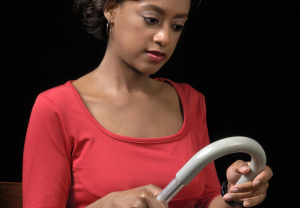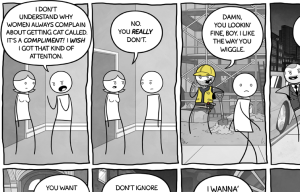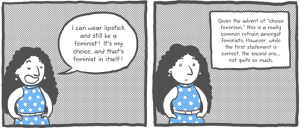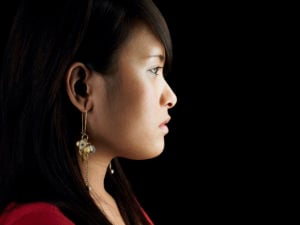Originally published on The Body Is Not an Apology, and republished here with their permission.
As someone who was born with cerebral palsy – and who has acquired several other disability diagnoses over the years – I’m used to throwing a monkey wrench into everyone else’s plans.
That isn’t meant to sound self-pitying. It’s just the way it is.
Sometimes, even the most well-meaning of my friends will forget that my disabilities actually have an impact on my daily life. On occasion, even my disabled friends are guilty of this oversight.
Many of the points I’m raising can apply to people whose disabilities don’t have an impact on their mobility and stamina the way mine do.
1. Your Walking Distance Doesn’t Equal My Walking Distance
Even non-disabled people have different definitions of “walking distance,” which makes trying to figure out whether something is within “walking distance” especially ridiculous.
Yet all the time, I hear non-disabled people throw around the term “walking distance” as though it’s nothing.
I have extremely limited stamina, so “walking distance” for me is dependent on any number of factors.
What mobility aid am I using? If I’m using my walker, I’ll be able to walk a lot farther than if I’m using a cane or crutches.
What’s the weather? If it’s particularly cold or rainy outside, my muscles will tighten up and make moving more difficult. Are there snow and ice on the ground?
If I have to shove my walker through piles of slush, even the shortest distance can be exhausting and, in some cases, nearly impossible.
Do we have to walk back after we’re done? Better double that distance then, since there’s no point in walking there if I can’t walk back.
And these are only a few of the questions that run through my mind when someone tells me that somewhere is within “walking distance.”
Calculating how far I can walk on any given day is based on a truly dizzying array of variables.
2. I Need to Know What Our Plans Are Ahead of Time
I choose what mobility aids I’m going to use that day based on the information I have about what we’re doing.
If we’re just hanging out at your house, I’ll only bring my cane – or, in the case of a few select people whose houses I’m very comfortable in, no mobility aids at all.
If I plan for that, and then you suddenly decide we’re going to walk to the diner a mile away, it upsets me. Because if you had told me ahead of time, I would’ve brought a more suitable mobility aid.
I would love to be spontaneous, but a lot of times, it just isn’t possible.
3. I Don’t Drive – And Public Transportation Can Be Complicated
Because of my disabilities, I don’t drive (though I hope that will change in the future). Both my parents work, so during the week, I’m left to my own devices if I want to go somewhere.
I’m lucky to live in an area that has fairly good public transportation, including a Long Island Railroad station twelve blocks away. I can get on a train and be in Manhattan within half an hour.
Still, public transportation, especially when you have a disability, can take some finagling.
Oftentimes, my friends will want to hang out, but they won’t want to work out the details of what we’re doing, when we’re doing it, and where.
I can’t just hop in a car and go.
Planning anything takes extensive amounts of research. If there’s a bus stop close by to where we’re going, I can take the regular fixed-route bus, because all of the buses have either a ramp or a lift.
If there’s no bus stop, I need to take AbleRide, the paratransit system in my area. That means booking my trip at least a day ahead of time and being at the mercy of when they can schedule a ride for me.
Once they’ve scheduled it, they give me a half-hour window in which my bus is supposed to show up. The bus is often late or fails to show up altogether. Once the bus shows up, I have five minutes to get on; otherwise, the bus is entitled to leave, and I get a black mark on my record.
These can add up and result in my losing my AbleRide eligibility for a determined amount of time. Once I’m on the bus, there can be other passengers who need to be picked up and/or dropped off before I get dropped off my destination.
A ten-minute trip by car can take two hours on AbleRide. Because of all of these factors, I tend to book AbleRide for at least an hour before I actually have to be where I’m going.
If we’re doing something in the city, I need to figure out what subways I can take from Penn Station to get there, and whether the subway stop closest to where we’re going is accessible.
Only a small fraction of subway stations in New York City are wheelchair accessible, and I’ve made the mistake of planning without checking first to see whether the stop I’m getting off at has an elevator.
And yet, even with all this complexity, I am profoundly grateful that I live in an area where I can get where I’m going with public transportation.
I went to college in a very rural area, where there was no public transportation whatsoever, so I was limited to the campus and the immediate surrounding area. If I had to go farther, I had to ask people for rides, and that was a major source of stress for me.
4. I Have to Conserve My ‘Spoons’
All of my disabilities have an impact on my stamina. In fact, it is actually documented that people with CP use three to five times the amount of energy that people without CP do.
Christine Miserando, who has Lupus, brilliantly used the metaphor of spoons to describe how disabled and chronically ill people have to conserve energy.
I use the spoon theory quite a lot. I’m not one of those people who can do ten things in a day, because I use up all my spoons. I much prefer to do one or two things so that I have the energy to enjoy myself.
If there’s a lot of walking or moving around involved, it makes it even harder. So I might be able to do shopping, dinner, and a movie if I have my wheelchair, but I’ll only be able to do one or two of those things if I’m walking.
And if I start getting quiet and drop out of the conversation in favor of fiddling with my phone, it’s not an insult to you or an implication that I’m bored. I’m simply tired. I’m always tired.
5. I Have a Curfew
So this one isn’t strictly true, in the sense that I always have to be home by a certain time. But, as I stated above, I don’t drive, so I have to rely on other people to get me places.
Frequently, those other people are my parents, and my parents work, so they have to go to bed on the early side in order to get up early. If they have to pick me up, they like to do it on the early side – no all-night fun times for me!
Even if I take the train, my parents (understandably) don’t like me, as a vulnerable young woman, rolling home from the train station by myself in the dark.
So please understand that, if we’re out, I’m going to want to get home by nine or ten PM so that my parents can sleep and be rested for work. I may get antsy or anxious about getting home.
That’s why it’s better to do things earlier in the day whenever possible. (I have more spoons earlier in the day as well.)
***
None of these issues are intended to be a criticism of non-disabled people.
I just want people to remember that, though I may have some unique access needs, I like to go out and hang out as much as the next 22-year-old woman.
When you’re hanging out with me, just keep these things in mind. Don’t be shy to ask me about any of them. You can always ask me whether I’m tired, or whether I want to go home, or whether I need to sit down.
Just be open, and we’ll have a great time!
[do_widget id=’text-101′]
Cara Liebowitz is a multiply-disabled activist and writer currently pursuing her M.A in Disability Studies at the CUNY School of Professional Studies in Manhattan. Her published work includes pieces in Empowering Leadership: A Systems Change Guide for Autistic College Students and Those with Other Disabilities, published by the Autistic Self Advocacy Network, and the Criptiques anthology. Cara blogs about disability issues large and small at http://www.thatcrazycrippledchick.blogspot.com. You can check her out on Twitter @spazgirl11.
Search our 3000+ articles!
Read our articles about:
Our online racial justice training
Used by hundreds of universities, non-profits, and businesses.
Click to learn more
Most Read Articles
- « Previous
- 1
- …
- 30
- 31
- 32




















